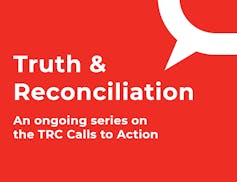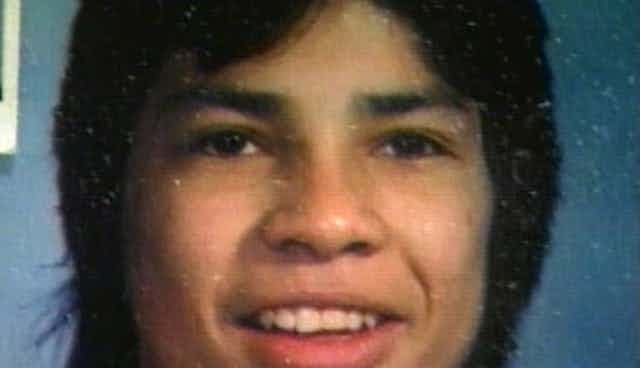On Nov. 29, 1990, the body of Neil Stonechild, a Saulteaux First Nations teen, was found frozen in a field on the outskirts of Saskatoon. It was -28C. He was just 17-years-old at the time of his death. He was found wearing only jeans and a light jacket and was missing one shoe.
Teenager.
Face down.
Light jacket.
Jeans.
One shoe.
-28C.
On Dec. 5, 1990, the Saskatoon Police Service closed the investigation into the death of Neil Stonechild. Despite visible injuries to the body of the Indigenous teenager, the file was closed. The investigation closed prior to receiving the Coroner’s Report, prior to receiving the toxicology report and prior to completing interviews with all witnesses.
In her book, Dying from Improvement, critical race scholar Sherene Razack discusses the Stonechild inquiry. She reports that the investigating officer said: “the kid went out, got drunk, went for a walk and froze to death.”

It would take over a decade and the freezing deaths of two more men and the near-death of another to crack the case wide open. Neil, the teenager, once dismissed as drunk and responsible for his own death, would become subject of a public inquiry that would lead to the firing of two police officers. His death would become synonymous with a racialized police practice called starlight tours.
Starlight tours describes a practice of police taking Indigenous people (said to have been picked up drunk or rowdy) and dropping them off at the edge of the city in the middle of the winter night. As Razak writes: “That there is a popular term [for this practice] is testimony to the fact that it happened more than once. The practice of drop-offs is a lethal one when the temperature is -28C and if the long walk back to town is undertaken without proper clothing and shoes.”
Remembering Neil
It’s November 2019, and I am talking to Neil’s brother, Chris Lindgren Astakeesic, about his brother’s death nearly 30 years ago. Chris recalls when his sister told him that Neil had died.
He was devastated. He had only been reunited with his younger brother and family in recent years after being in the foster care system and living outside Saskatchewan. Coming back into his family’s life, Chris made an immediate connection with Neil. Despite not being raised together, they shared a love of wrestling and created a solid bond.
Chris remembers Neil as many others did as a “fun-loving and very caring” person, adding that he “loved messing with him. He was a great kid and great brother. He loved life.”
Neil was wearing the letterman jacket that Chris gave him when he was found in the field. Stella, Neil’s mom, talked about the jacket during the inquiry into his death. The jacket had particular importance to Chris. Neil had treasured it and so Chris gave Neil the jacket before leaving for a trip to Ontario.
Given the sentimental importance of the jacket, Chris went to the police after the investigation concluded to request Neil’s belongings including the jacket. The Saskatoon Police told him they couldn’t find it. “I don’t even know if this has been told publicly,” says Chris. “But we couldn’t find any of his stuff.” The jacket and Neil’s other possessions were never returned. Chris tells me his mom, Stella, “was heartbroken.”
The inquiry
Chris speaks with a broken voice, recalling with vivid detail the time around Neil’s death and his experiences attending the inquiry as he drove back and forth to Saskatoon to attend as many dates as possible and be with his family.
I ask Chris what he thinks happened to Neil that night.
Chris mentions two police constables. “I think Hartwig and Senger had some fun, tried to scare him and it went to far,” he says. Chris recalls that Neil’s friend, Jason Roy, reported seeing Neil in the back of a police car that night. When Jason last saw Neil he was begging for help, screaming, “Help me, they are going to kill me.”
The findings of the inquiry established that police constables Larry Hartwig and Bradley Senger “took Stonechild into custody” and that the injuries and marks to his body “were likely caused by handcuffs.”
Hartwig and Senger argued their innocence and said they did not have contact with Stonechild that night. Evidence to the contrary was presented.
The evidence led Justice David H. Wright to conclude that Hartwig did recall the events that night (despite his assertions otherwise) and as such “his assertions are deliberate deception designed to conceal his involvement.” The inquiry, through witness after witness’ testimony, offered a lesson in systemic racism in a settler state. But the recommendations did not address systemic racism and instead focused primarily on race relations.
Hartwig and Senger were dismissed from duty in November 2004 within a month of the report’s release. They appealed. Their appeals were rejected and the courts upheld the findings of the inquiry.
Stereotypes of victims hinder justice
The question of Neil’s personal belongings mirrors more recent stories in Saskatchewan. There are too many stories of other families that did not receive personal items from their loved ones. Often this is connected to a lack of investigation into sudden deaths.
After Nadine Machiskinic, a 29-year-old Indigenous mother of four died in Regina, the family reported her items were thrown away before a police investigation was even able to begin.
After 14-year-old Haven Dubois drowned in a shallow ravine, his family challenged the coroner’s report that had ruled his death an accident with marijuana as a contributing factor. His death had limited investigation.

The families of Haven and Nadine both argue their loved ones did not get a full investigation because of perceptions about them, as Indigenous people, on the prairies.
Like Neil’s family, these families fight for justice for years on end. They fight back against the ruling of accidental death. They call for inquiries and inquests. They fight back against assumptions made about the intoxication of the victim versus the real possibility of foul play.
Fifteen years later after the inquiry
The image of Neil Stonechild’s body lying in a frozen field still haunts the prairies.
The starlight tours continue to have ripple effects and impact relations between Indigenous peoples and police. The release of the 2004 Report of the Commission of Inquiry Into Matters Relating to the Death of Neil Stonechild called for reforms including more police accountability.
Of the Truth and Reconciliation Commission’s 94 Calls to Action, 18 deal with the criminal justice system. No. 39 calls upon the federal government to develop a national plan to collect and publish data on the criminal victimization of Aboriginal people, and No. 38 calls upon all levels of government to commit to eliminating the over-representation of Aboriginal youth in custody over the next decade. The TRC also placed emphasis on truth. We need to tell the truth about police practices and starlight tours in the prairies in Canada.
Concerns have been raised by the Federation of Sovereign Indigenous Nations (FSIN). “We have come a long way in 15 years but there is always room for improvement,” Dutch Lerat, the Vice Chief for the Federation of Sovereign Indigenous Nations, told APTN. “We urge the Ministry of Justice to improve upon the public complaints process with emphasis on creating a civilian-led oversight authority.”
Saskatchewan is one of the last provinces to adopt independent civilian oversight despite ongoing, high-profile cases that raise concerns about how police work.
I spoke to Chris on the phone between anniversaries that no family should have to know: the freezing death of your loved one and the release of the findings of a public inquiry into their death.
He said:
“I am hoping [other families] can go back to this story for future reference and for future kids, so this doesn’t happen again.”
In honour of his memory: Neil Stonechild was a 17-year-old boy. His family loved him. Neil froze to death and some of the last people to see him alive were two police officers. Neil Stonechild died as a result of the starlight tours.
[Deep knowledge, daily. Sign up for The Conversation’s newsletter.]

